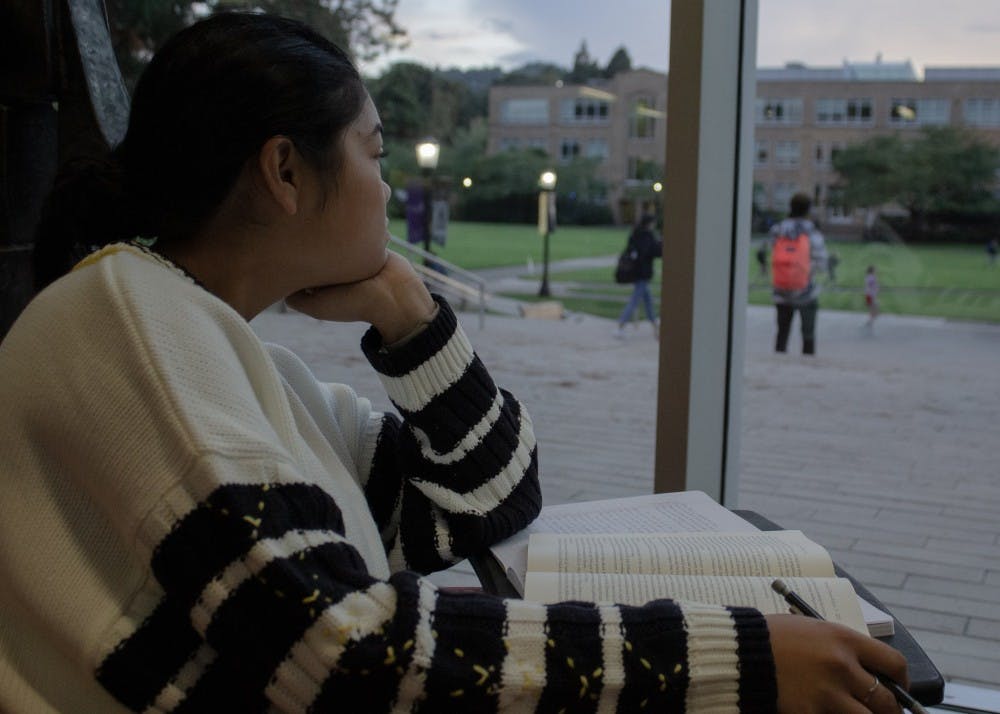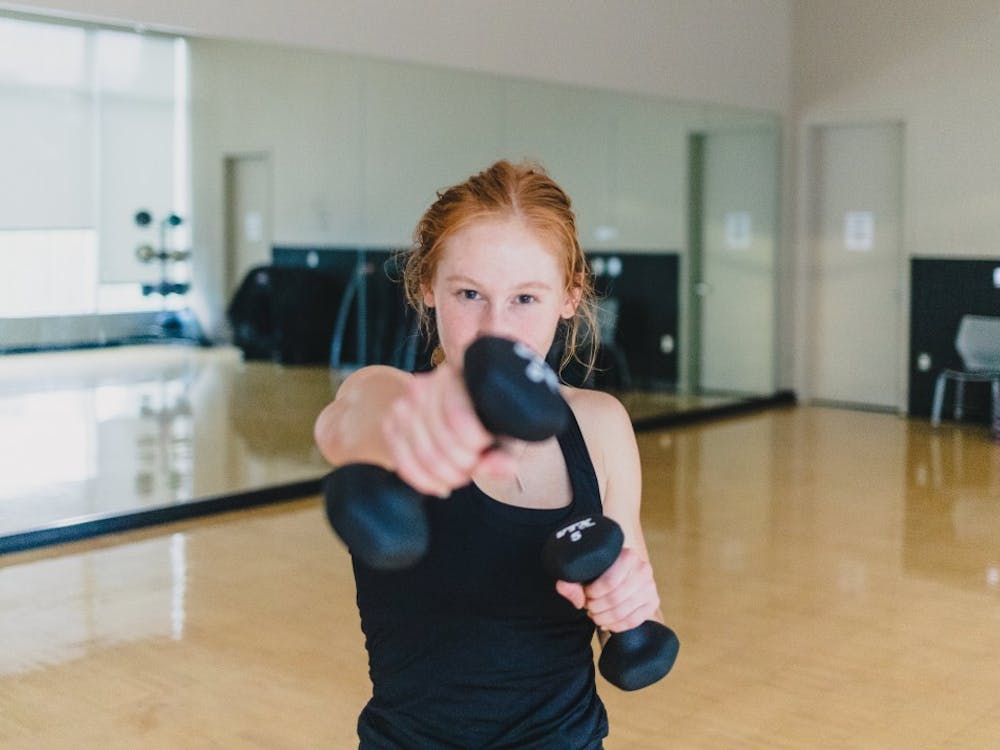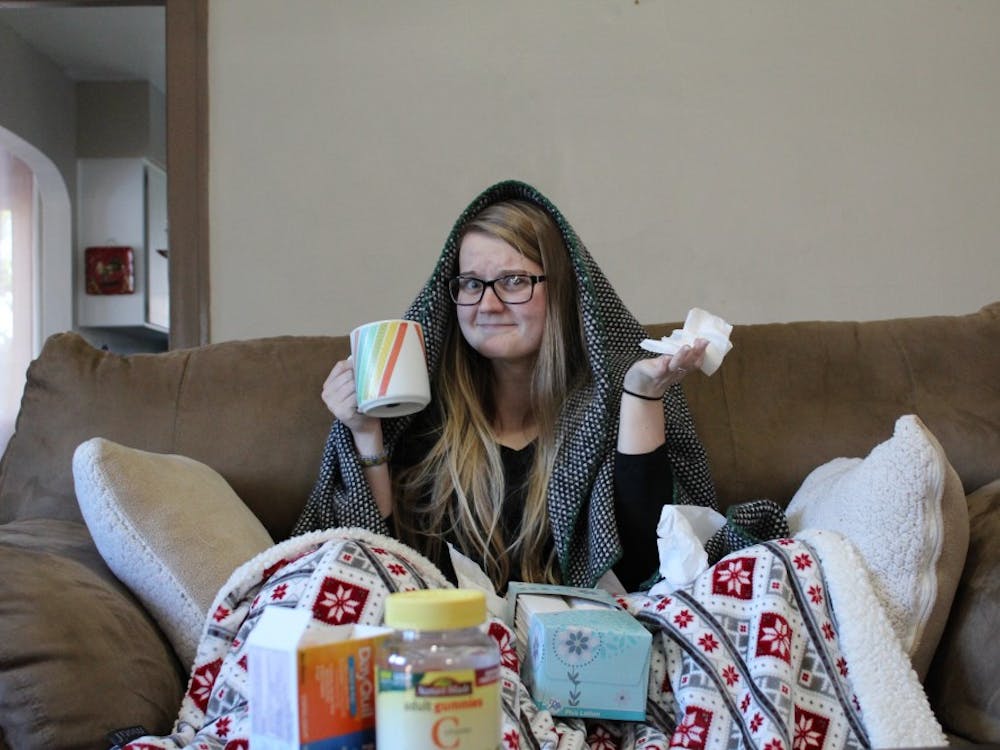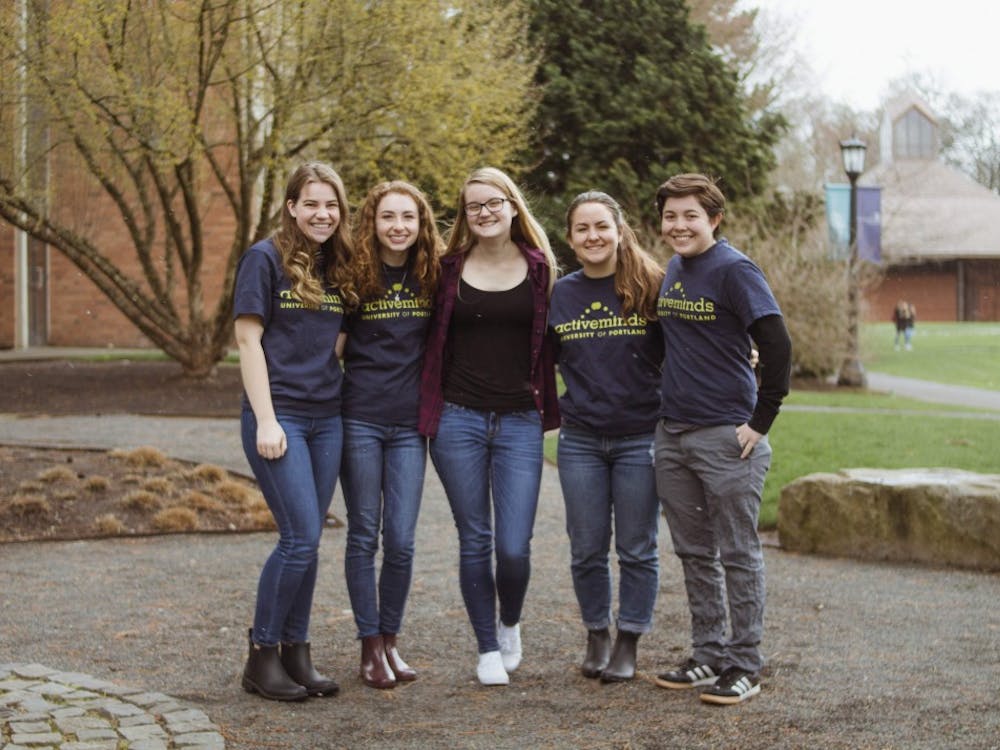To many students, the transition from summer to fall means busting out sweaters, drinking apple cider and going to pumpkin patches. But in Portland, it also means more rain and less sunlight. Portland, on average only has 144 days of sunshine a year, while the U.S. average is 205 days. And with recent temperatures dropping in Portland, it’s apparent that fall is officially here. At this time, some students may start to feel a lack of motivation and overbearing fatigue, symptoms of Seasonal Affective Disorder (SAD).
With the changes in seasons, many UP students are susceptible to SAD because of the shorter days and minimal sunlight. SAD is a seasonal depression pattern characterized by general feelings of low mood or sadness, tiredness, mood swings and loneliness, among other symptoms. About 5% of the American population is affected, and it’s more prevalent in women and young adults.
Many factors contribute to SAD like changes in circadian rhythm, lack of movement and activities and homesickness, but there are many treatments to combat it.
Circadian rhythm

Stress from schoolwork can further contribute to Seasonal Affective Disorder. Photo Illustration by Jennifer Ng.
During the winter — especially in the Pacific Northwest — the sun sets earlier in the evening and rises later in the mornings. The dramatic changes in daylight messes with the circadian rhythm, the body’s natural sleep clock. The sun rising later and setting earlier leaves people without energy or motivation.
Evolutionary psychologists have argued that SAD stems from a human instinct to hibernate during wintertime. They theorize that the body has a biological urge to conserve energy during the winter by doing less and sleeping more. Unfortunately, this biological urge doesn’t serve college students well, especially in the swing of exams.
According to Director of the Health and Counseling Center Carol Dell’Oliver, college students are more susceptible to unhealthy sleep patterns, and the winter weather worsens these patterns.
“Young adults are more at risk for SAD, and researchers aren’t quite sure why that is. But one strong guess is that young adults’ sleep schedules can be so off in college,” Dell’Oliver said.
Courtney Rau, the associate director of primary care services at the HCC, and Dell’Oliver emphasized the importance of creating a routine during the wintertime. They suggest the best routine would be waking up early to see the most possible daylight and incorporating exercise and social activities into each day.
“It’s really important to establish that routine sleep pattern and making adjustments to avoid oversleeping,” Rau said.
Lack of movement and activities
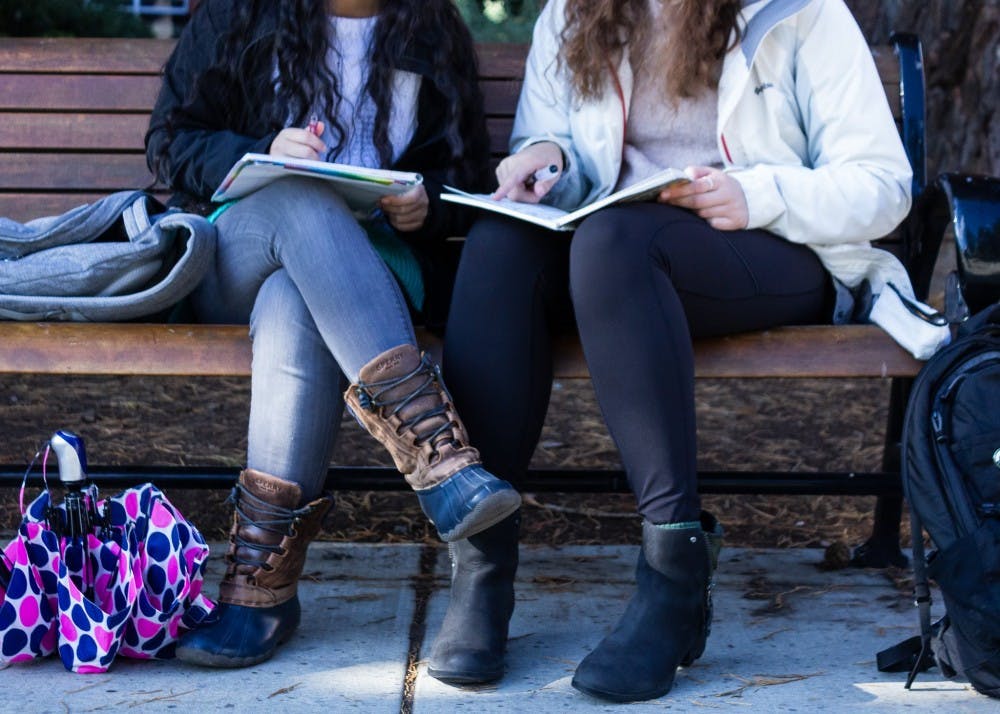
Being outdoors or studying with friends are good ways to ease the symptoms of Seasonal Affective Disorder. Photo Illustration by Jennifer Ng.
In Portland, the rain forces people inside most days, making it harder to find fun, social and outdoor activities. Even small changes, like not being able to hang out on the quad in the sun with friends can affect people’s moods.
Sarina Saturn, a psychology professor, studied SAD at OSU. According to Saturn, it’s important for students to not isolate themselves. It’s as little as studying with a buddy inside.
UP also has a number of outdoor pursuits activities, including ski and snowboard trips. Beauchamp Recreation and Wellness Center offers a wide variety of classes including Pilot Spin, HIIT (High Intensity Interval Training), yoga sculpt and oula fit classes.
It’s easy to ignore the advice to be active and social. However, movement can help combat mood changes during the winter. The Recreation Operations program manager at Beauchamp, Kaitlin Bourne, emphasizes how important exercise is for mood, and says that it’s best done in the morning.
“When it starts to get darker earlier, it’s important to create a routine or schedule something in the beginning of the week, where you plan out a time to get some movement, some fitness in,” Bourne said. “It’s proven that just 20 minutes of cardio a day can elevate your mood … It increases the endorphins in your body, which creates a lot more oxygen to naturally feel more energy.”
Lack of sunlight
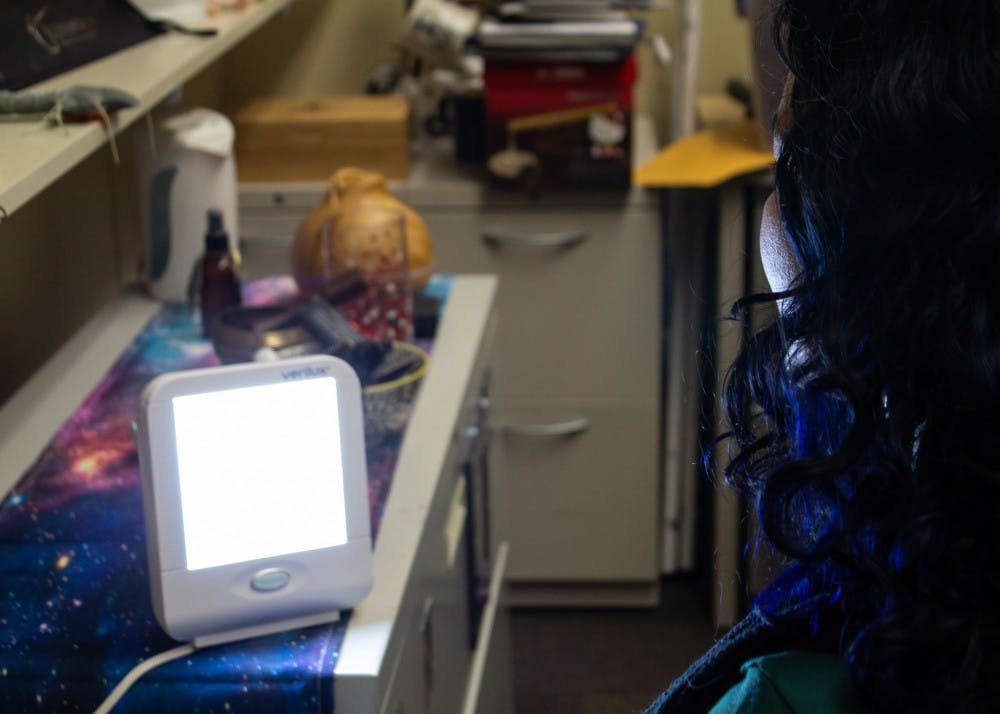
Happy lights can be used to supplement lack of sunlight to help maintain one's circadian rhythm.
During the Portland winter, weeks can pass without any sunlight. The majority of UP students are from California (28.9%) with a significant amount from Hawaii (9.3%) as well, who are used to more sunlight. A lack of sunlight affects the body in different ways that psychologists are still investigating, according to Saturn.
Minimal sunlight can increase melatonin levels, the hormone that regulates sleep. Melatonin is typically released as it gets darker, telling the body to go to bed. Without sunlight, people feel more tired during the middle of the day.
People with blue eyes have a smaller amount of pigment in their eyes than people with brown eyes, which lets more sunlight in through their eyes. Saturn said that darker skin and darker eyes act like a “natural sunscreen,” making them more inclined to the negative effects of a lack of sunlight.
Exposure to the sun allows the body to produce Vitamin D, a necessary vitamin for a healthy living.
“Vitamin D is really good for our immune system, really good for our calcium levels so that our bones and our brains are happy,” Saturn said. “It inhibits a few things that may lead to cancer, and even supporting insulin and blood pressure.”
There are Vitamin D supplements, but research is inconclusive as to whether they have a direct impact on SAD, according to Saturn. Though the supplements can be helpful, people should not rely on them, according to Rau.
Another way to combat a lack of sunlight is through light therapy in the form of happy lights. Light therapy helps with circadian rhythms and is found to encourage production of serotonin.
“There is some research showing that the light therapy suppresses melatonin production. However, there is a complex array of other genes in play, so in addition to serotonin, it is likely that some genes are also affected by the light therapy, either directly or indirectly by the decrease in melatonin,” Saturn said.
Light therapy also has to be used correctly or it causes more harm than good.
“The use proper of a sun lamp, is between 7 a.m. and 9 a.m., so it can be helpful to wake up earlier. You want to get out in the sun, or the light as soon as you wake up.” Rau said. “You want to use it earlier in the morning because if you use it in the afternoon, it could keep you up at night.”
Unlike other universities with similar weather conditions, UP does not currently offer light therapy to students. At the University of Michigan in Ann Arbor, Michigan their health and counseling center has a “Wellness Zone,” where it provides “happy lights” daily. Saturn has been working with Active Minds to implement similar resources for SAD at UP.
Increases in stress levels and homesickness during the winter months
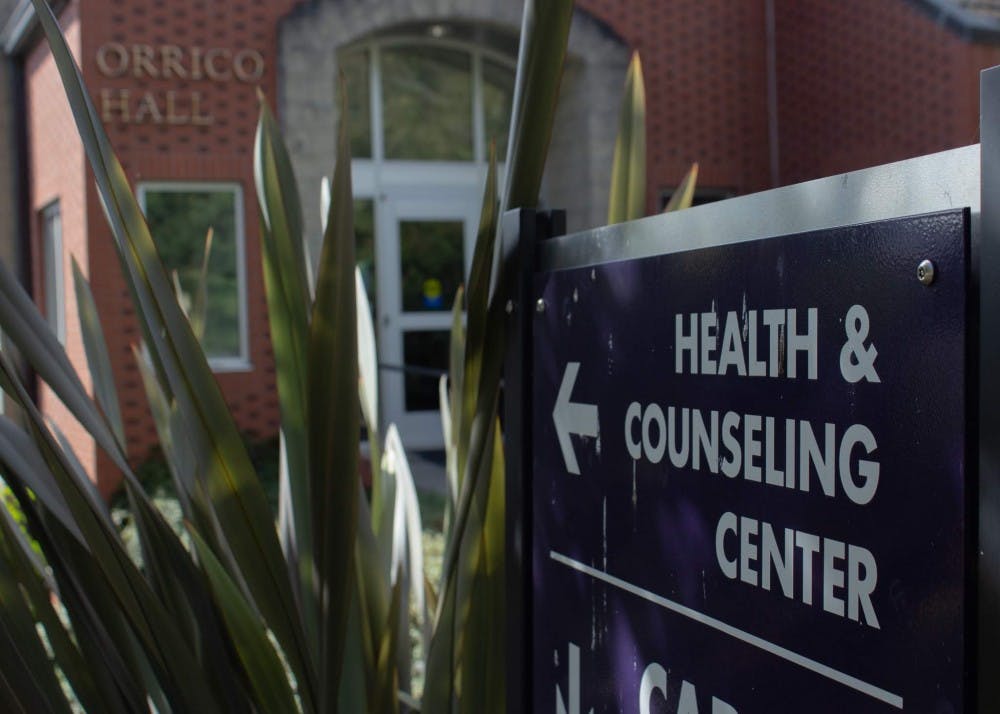
The Health and Counseling Center offers resources for students dealing with Seasonal Affective Disorder.
SAD symptoms can generally start during October and November, coinciding with increases in school work and seasonal changes. Elevated stress and anxiety levels from school work contributes to SAD, making it easier for people to stay immobile and unsocial. More school work also means students spend more time inside and sitting down. Schoolwork is unavoidable, but Saturn said students need to keep in mind how important it is to take breaks and be social when schoolwork can feel overwhelming.
Along with increased stress levels, about 74% of the UP student body is from out-of-state, making it difficult for more than half of UP students to go home. Even students from Oregon and Washington are prone to homesickness. While at school, most students are unable to spend time with family or sometimes even have a home-cooked meal, which can contribute to changes in mood.
For some students, homesickness is almost unavoidable. Students from Hawaii or Guam find it hard to travel to during breaks because of distance and high travel prices.
Sydney Kishaba, a junior nursing major from Oahu, Hawaii, said she can only go home during winter break.
“I think that because we’re so far away, we hardly go home. A lot of homesickness, that was the hardest part for me,” Kishaba said.“Especially for holidays like Thanksgiving when some students can just drive home. It hits me all the way until April.”
But even students from states known for little sun and colder weather experience changes in energy. Junior nursing major Eileen Ryan is from Minneapolis, Minnesota. Minneapolis has cold winters with cloud covers occasionally similar to Portland.
“I feel myself wanting to be inside a lot more during the winter in both Minnesota and Portland, with less energy in general. In Minnesota during the winter, everything is dead which makes it extra sad,” Ryan said. “The rain in Portland makes everything green, so I like to think that makes my mood better during the winters.”
Rau and Dell’Oliver encourage students to be proactive about their mental health by following healthy routines and practicing self care. The HCC also urges students to come in and seek help from professionals.
If students are experiencing moderate to severe depression in the winter months, and if it continues into summer, medication can be considered as a treatment. Saturn said since SAD manifests in a shorter time period, Selective Serotonin Reuptake Inhibitors (SSRI’s) should be considered only after all other measures have been taken.
“I have never seen a presentation of moderate to severe depression that is only seasonal, and then they feel 100% fine during the summer,” Rau said. “It’s usually that if they don’t feel any symptoms of depression during the summer months, it’s typically milder in the winter months, I don’t see an extreme basically.”
Health experts on campus urge students to be gentle with themselves and their peers, and to seek help if they need it as the fall weather sets in and the days become darker and shorter.
Fiona O’Brien is a reporter for The Beacon. She can be reached at obrienf21@up.edu.



